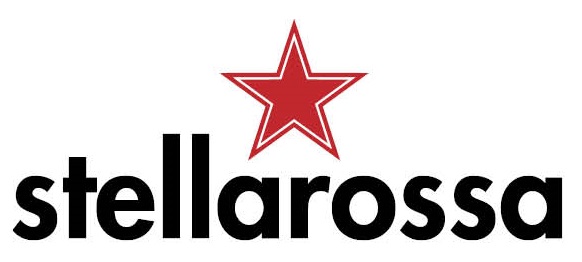Injuries – To Tape or Brace? That is the Question!
Ankle injuries are one of the most common injuries in netball. A minor sprain (tear of part of one of the ligaments in the ankle) may only require a week off training and a few treatments from a physiotherapist to help decrease the pain and swelling and show the player the exercises she needs to strengthen the damaged muscles and ligaments while they are repairing. However, a severe ankle ligament sprain may put a player out for 6-10 weeks and require months of rehabilitation exercises. Even after 12 months the injury is often not “back to normal”.
Factors that increase the risk of an ankle sprain include: a previous history of an ankle injury; wearing shoes with too much cushioning in the heels which may decrease the bodies awareness of where the foot is; and not stretching prior to playing.
It makes sense to take steps to try to decrease the number of ankle sprains and the severity of the sprains.
There are several studies conducted over the last few years that showed that wearing an external ankle brace decreased the risk of spraining the ankle, especially if there is a history of an ankle sprain. There are also studies which show that wearing properly applied sports tape also decreases the risk of ankle sprains. Braces and tape work during running and also if landing on another player’s foot, which is a common mechanism of injury in netball.
Some people think that wearing an ankle brace or tape might protect the ankle but shunt the injury to another part of the body for example the knee, but there is no evidence that this happens.
All Firebirds players are required to either wear tape or an ankle brace to all training and games to prevent ankle injuries. Most national league teams also have this policy. The best tape is the premium rigid sports strapping tape (Beiersdorf or Elastoplast). It is best to put it on without using underwrap as this decreases the contact that the tape has on the skin and so it is less effective. Some people are allergic to the glue used on the tape. They should try a different brand of tape first and/or put skin protecting tape or liquid underneath (for example “fixamul, hyperfix or comfeel”). The alternative is to use a brace. The “Rocketsok” ankle brace seems to work well in netball.
It takes a third of a roll of tape for each ankle per training session so if you train twice and play once a week at an average of $10 /roll tape costs about $20/week. An ankle brace costs about $80 and should last a season so the best financial option depends on how much you play.
Always make sure you ask a physiotherapist to show you how to put on the tape properly as if it is poorly applied it isn’t as effective. Different people will need to use different methods of taping dependant on their foot shape and if they have had a sprained ankle before so please make sure you get expert advice.
Another important aspect in preventing ankle injuries is training the body to sense the position of the ankle and to react quickly to any change in position. This is known as proprioceptive or perturbation training. It is especially important after an ankle injury as these reactions don’t seem to come back automatically and need training. Even the uninjured side seems to be affected by this problem after an injury. There is also some evidence that this type of training can help to prevent ankle sprains and also knee injuries. The training involves challenging the balance system by activities like standing on one foot on a moving surface like a wobble board and doing different activities like throwing and catching a ball and activities like walking on a narrow line or beam and little, fast hopscotch jumps in and out of boxes. There are many variations of this sort of training and it can be lots of fun as well as helpful.
So to answer the question To tape or brace, well the research shows that either option helps to prevent ankle sprains as long as you are using them! So choose the right option for yourself and don’t forget to do some “proprio” training as well.
Jan Smith
Firebirds Physiotherapist 2000 – 2003
References:
Prevention of Ankle Injuries GD McKay Proceedings 2002 Australian Conference of Science and Medicine in Sport
Interventions for preventing ankle ligament injuries, Handoll HHG, Rowe BH, Quinn KM, de bie R, 2004, The Cochrane Library, Issue 1, Chichester, UK
Ankle Taping and Bracing
By Steve Hawkins
Croydon Sports Medicine Centre
APA Sports Physiotherapist
Melbourne Kestrels / Australian 21/Under Netball Teams
Ankle injuries are among the most common injuries suffered by netballers at all levels of the game from national league down to netta juniors. The explosive nature of the sport with rapid direction change, quick pivots, dodging and landing at high speed and in close proximity to other players means netballers with ankle injuries account for a large proportion of all sportspeople attending sports medicine centers, hospitals or clinics for treatment.
However, the risk of ankle injury can be substantially reduced if players choose to take a preventative approach to their play and either apply tape or ankle braces prior to taking the court.
Myths and misconceptions:
Won’t it weaken my ankles?
Taping and bracing are designed to limit excessive movement at the ankle joint…..the sort of movement likely to result in an injury. If applied correctly, both taping and bracing should allow normal movement to take place unrestricted, which will in turn allow normal muscle activity to occur around the joint and maintain normal strength within those muscles. Therefore tape or braces are an extra helper to your ankle’s normal protective mechanisms and won’t encourage any weakness.
Isn’t it just for people who’ve already been injured?
Why wait for an injury to occur before doing something about it? Taping or bracing as a preventative tool is all about being proactive and reducing the chance of injury and time off netball for rehabilitation. For many years, elite netball teams have had a policy of taping or bracing for all players at all times ie: training sessions, practice matches and tournament matches. In that time there have been very few ankle injuries. For this reason, ankle joint protection will continue to be a priority for state representative players regardless of previous history.
Which one? Tape or brace?
Taping
There is a certain skill to effectively taping an ankle joint for injury management or rehabilitation. For the taping to be effective it must be applied correctly and in a manner that allows normal movement to occur while restricting unwanted, excessive movement. This takes practice and will usually require some instruction from a qualified physiotherapist or sports trainer as to the correct method and sequence. Taping does take some time and must not be rushed so preparation prior to a game or training session is important to allow enough time to apply the tape properly. Tape should cost between $10-$15 per roll which in turn should provide enough tape for around four ankles. Across a season this may become somewhat expensive, but if done properly will provide the maximum amount of support to the ankle joint.
Bracing
There are a very large number of devices available from chemists, sports medicine centers and clinics that may be referred to as “braces”. Not all of these are appropriate for providing support or extra stability to ankle joints. Elasticised, slip-on supports help to keep a joint warm, but provide very little assistance to the stability of that joint. A well designed ankle brace will usually consist of a lacing system, some rigid or semi-rigid stays on the sides of the brace, possibly a Velcro strapping mechanism and be constructed of a sturdy material. They are quick and easy to apply and allow little room for error with their application, meaning little or no training is required for their use. They don’t offer quite the same degree of support as taping but will be suitable for almost anyone. Most ankle braces retail for between $75 and $100 and if looked after should last most players around twelve months before needing replacement.
For those players who already use ankle tape or braces, most will have tried both before deciding what feels best. It should be an individual choice based on trial and error and in consultation with your physiotherapist if necessary. Remember that the best way to enjoy netball is to keep playing and the best way to keep playing is to avoid injury, so consider ankle tape or bracing as a way of achieving this.







